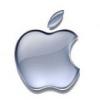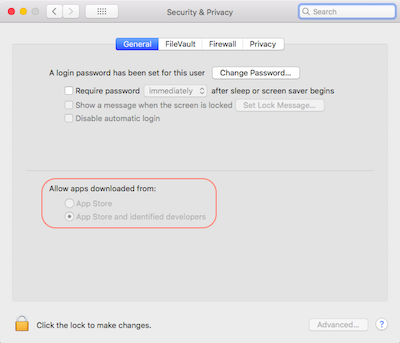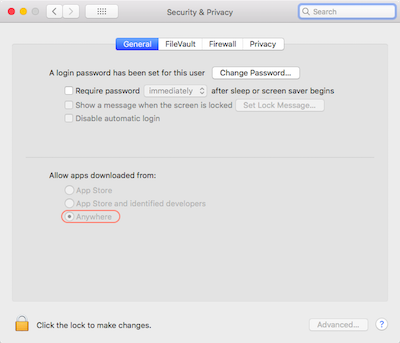-
Posts
10067 -
Joined
-
Last visited
-
Days Won
569
Content Type
Profiles
Articles, News and Tips
Forums
Everything posted by Hervé
-
Recovery partitions are created by default when installing OS X/macOS for some years now. Useful on Clover-based installations but not on Chameleon-Enoch ones because these cannot boot recovery partitions. As such, it can be desirable to remove them to retrieve the (small) disk space they take and suppress them from the list of partitions. This is achieved with Terminal commands through the following method: verify volumes arrangement and identify main + recovery partition disk identifier. The recovery partition will directly follow the main volume to which it relates. diskutil list reformat recovery partition under HFS+ type and new name (no space) diskutil eraseVolume HFS+ <new name> <disk identifier> (eg: [...] Blank disk0s3) recover ex-recovery/Blank partition disk space by merging it with its associated main volume (listed right above it). diskutil mergePartitions HFS+ <main Volume> <main disk id> <blank disk id> (eg: [...] Sierra disk0s2 disk0s3) NB: Partitions have to be sequential to be merged. For help on the diskutil command, type man diskutil.
-
CoreStorage logical volume management was introduced by Apple in Lion. Since Yosemite, Apple has forced its utilisation by default. Whilst this is Ok with Clover-based installations, it is not with Chameleon/Enoch-based ones because these cannot boot CoreStorage volumes. As such, after fresh installations and, sometimes, updates (depending on how the installation was made), it's therefore necessary to revert CoreStorage volumes to legacy mode. This is achieved with Terminal commands through the following method: verify CoreStorage status and identify volume diskutil list if logical volume found/listed, revert to legacy volume mode diskutil CoreStorage revert <disk identifier> (eg: disk1) verify return to legacy mode diskutil list NB: For help on the diskutil command, type man diskutil.
-
Hibernation is enabled by default after any fresh installation of Apple's OS; sometimes, it's even re-enabled after an update. Although Clover has supported hibernation for some time, it can still cause issues on Hackintoshes and it's often desirable to disable hibernation in order to revert to plain old sleep. This is achieved through the following Terminal commands: sudo pmset -a hibernatemode 0 ` To delete the sleep file: sudo rm -f /var/vm/sleepimage ` To point the sleep file towards null device (though sleep file may still re-appear): sudo pmset -a hibernatefile /dev/null ` To verify hibernation setup: pmset -g
-
Graphics acceleration is one of the most important required feature to run OS X/macOS properly. Without it, OS performance is poor to extremely poor depending on the hardware specs of the computer, especially the CPU. Graphics acceleration can be verified through the following (non-exhaustive) actions: Translucent Finder's bar (most visible from Snow Leopard to Mavericks) LaunchPad through Dock icon (clicking in and out of LaunchPad should be quick and totally smooth) DVD player app -> Help Menu -> Show Supported Features (all should be enabled) Desktop switching through Ctrl-Up/Ctrl-Down/Ctrl-Left/Ctrl-Right (should be quick and smooth) Desktop and Screen Saver PrefPane (all desktop pictures and screen savers should show Ok) Without graphics acceleration, system will feel laggy and graphics glitches will occur.
-
macOS Sierra and later no longer allow all apps to run by default. Instead, GateKeeper protection was beefed up and it now limits execution to apps downloaded from AppStore or AppStore & identified developers. As such, some downloaded apps cannot be executed without triggering a warning and users may have to go to the Security & Privacy PrefPane to allow the app to run. To change his and allow execution of all downloaded apps by default, type the following Terminal command: sudo spctl --master-disable The restriction will then be lifted and all downloaded apps will be allowed to run. I believe this info was 1st reported by Netkas.
-
Since Yosemite 10.10.4, OS X/macOS supports trimming for non-Apple SSD. The facility can be enabled through the following Terminal command: sudo trimforce enable ` For earlier versions, the IOAHCIBlockStorage kext must be binary patched to suppress whitelisting for Apple-branded SSDs only: Find: 004150504c452053534400 (=> " APPLE SSD ") Replace by: 0000000000000000000000 (=> " ") NB: this patch can also be used for Yosemite 10.10.4 and later.in I believe the patch was 1st reported at InsanelyMac. It's one of the kext patches provided by default in Clover Configurator.
-
It's required after any kext addition, removal or modification, whether in /S/L/E or in /L/E. To repair permissions, type the following Terminal commands: sudo chmod -Rf 755 /S*/L*/E* sudo chmod -Rf 755 /L*/E* sudo chown -Rf 0:0 /S*/L*/E* sudo chown -Rf 0:0 /L*/E* ` To rebuild the cache, type the following Terminal command: sudo touch -f /S*/L*/E* sudo touch -f /L*/E* The cache should then automatically rebuild itself.
-
It's required after any kext addition, removal or modification, whether in /S/L/E or in /L/E. To repair permissions, type the following Terminal commands: sudo chmod -Rf 755 /S*/L*/E* sudo chmod -Rf 755 /L*/E* sudo chown -Rf 0:0 /S*/L*/E* sudo chown -Rf 0:0 /L*/E* ` To rebuild kextcache and prelinked kernel, type the following Terminal command: sudo touch -f /S*/L*/E* sudo touch -f /L*/E* sudo kextcache -Boot -U / ` Sometimes, the system returns an error message about not being able to modify/rebuild the cache and/or the prelinked kernel. In this case, the existing cache and prelinked kernel can be deleted using the following Terminal commands: sudo rm -Rf /S*/L*/PrelinkedKernels sudo rm -Rf /S*/L*/Caches/com.apple.kext.caches The cache and prelinked kernel can then be rebuilt using the above touch and kextcache commands.
- 1 reply
-
- 3
-

-

[SOLVED] E6410 Sierra can't get speedstep to work
Hervé replied to itsworking's topic in The Archive
Don't set DropOEM. Just select Generate P-States and Generate C-States. Then, I strongly recommend you tune FakeSMC to the keys of MBP6,1/6,2 and, of course, select that has your SMBIOS. https://osxlatitude.com/index.php?/topic/2673-performance-tuning-with-fakesmc/ https://osxlatitude.com/index.php?/topic/7283-apple-mac-smc-keys/ https://osxlatitude.com/index.php?/topic/7807-nvidia-gpu-performance-tuning-with-agpm/ -
'haven't seen this model mentioned before, so it'll be same as usual for a 1st timer: 1) identify your other hardware elements (LAN, wifi, bluetooth, SD card reader, etc) 2) built your USB installer (with Clover or Enoch as boot loader) 3) install Sierra 4) look for the kexts/drivers suitable for your identified hardware elements and add support for them
-
After inquiring about his E6230 in an E6320 thread, walterwolf was specifically pointed to this guide... Makes me wonder if it's a E6220 or a E6230 he's got. There sure appears to be some confusion.
-
It does not look like you repaired permissions as instructed by JakeLo. Don't use Kext Wizard, do it manually.
-
They are 2 separate things with no relation between them. Whether you proceed or not is entirely up to you.
-
Revert to your original settings then.
-
The right patch maybe? http://www.insanelymac.com/forum/files/file/563-sierra-mbr-patch/
-
Look again! Use the built-in help if you can't see the obvious.
-
Only the webcam and the security chip are seen in IOReg. If it's a DW1550 you have, it may need to go into a WWAN/combo PCIe-USB slot for Bluetooth to be available (if WLAN slot is PCIe only).
-
Vey common mistake. Broadcom 5880 is a security chip fitted as standard on models that may receive the optional fingerprint reader. But, as stated by JakeLo, it's no Bluetooth module and none are listed on this M4800.
-
Ideally, /L/E rather than /S/L/E (not /S/L). You can cache kexts from there are opposed to inject them with Clover.
-
You cannot tell if SD card reader is USB-internal or PCIe by looking at the slot. You have to check whether it appears under the USB section of your SysProfiler or in the list of PCI devices in DPCIManager app (or Terminal command lspci -nn if you've installed the package). USB card readers normally work OOB or not all all. VoodooSDHC or Apple's own kext operate on compatible PCIe readers. If it's a PCIe model, you can try and declare it compatible with Apple's own device in DSDT. If it turns out compatible, it'll then work OOB.
-
The iGPU will consume less battery, yes. You can swap keys through the Keyboard PrefPane...
-
Seems Ok to me. Make sure to repair permissions and rebuilt your cache after you modify the FakeSMC kext.
-
Moving to Support section since posted in Guides section which clearly states "no support here"...
-
No, the FakeSMC patch of the D630 pack does include the PCI id of the GPU. You just missed it. NVS 135m carries device id 042b, so it's clearly different from the NVS 160M which you state to carry id 06eb. Read the thread with more attention...
-
Dell had a tendency to fit different webcams to those laptops. What's the model? Its PCI ids? The E6320 was a typical example with some laptops fitted with a Sunplus webcam and some with a Sonix. Only the former is supported under OS X, not the latter. Same thing with the E6230: some laptops are fitted with a Sonix webcam carrying device id 0x648b (supported) and some with a different Sonix model carrying device id 0x6449.




